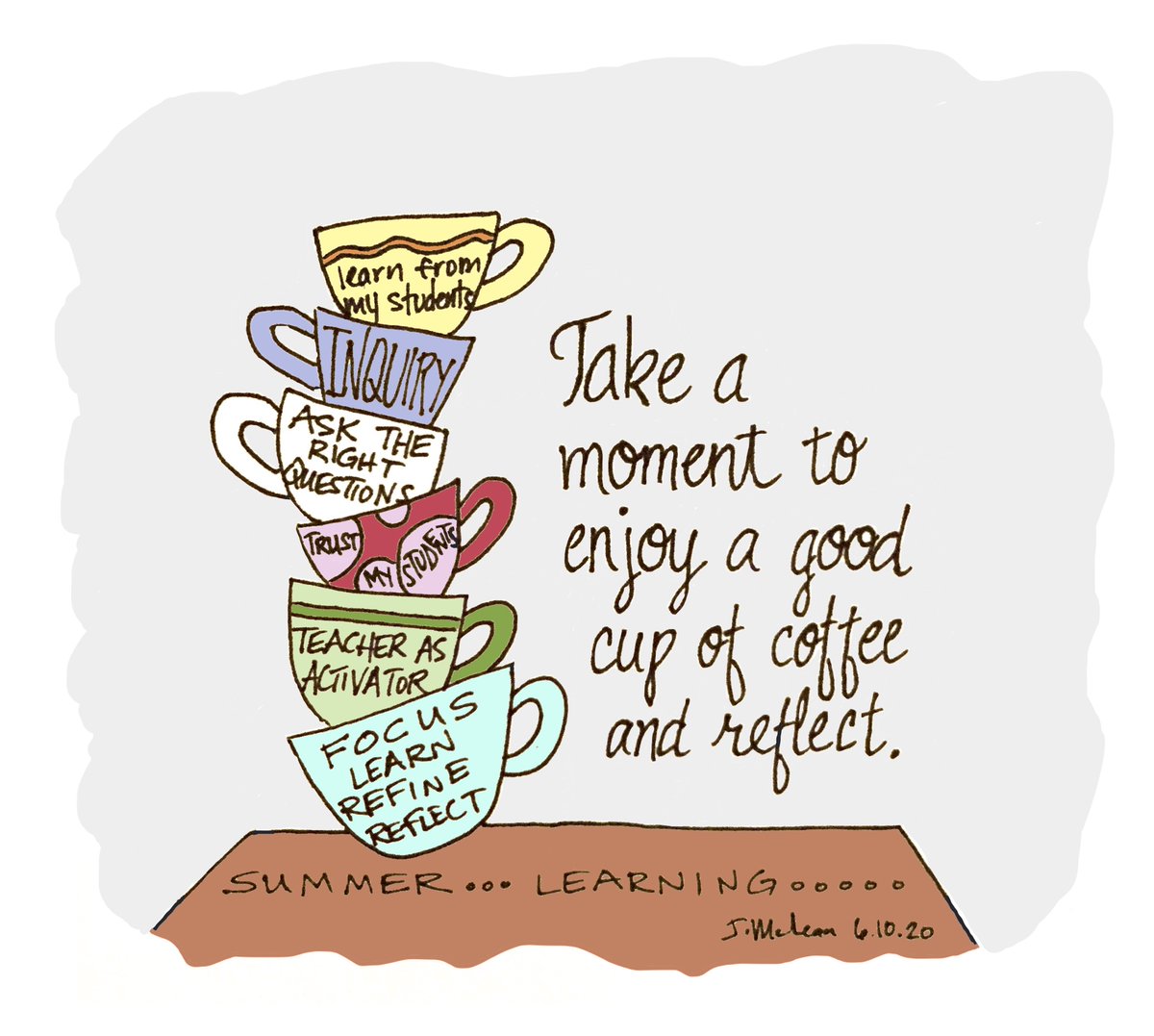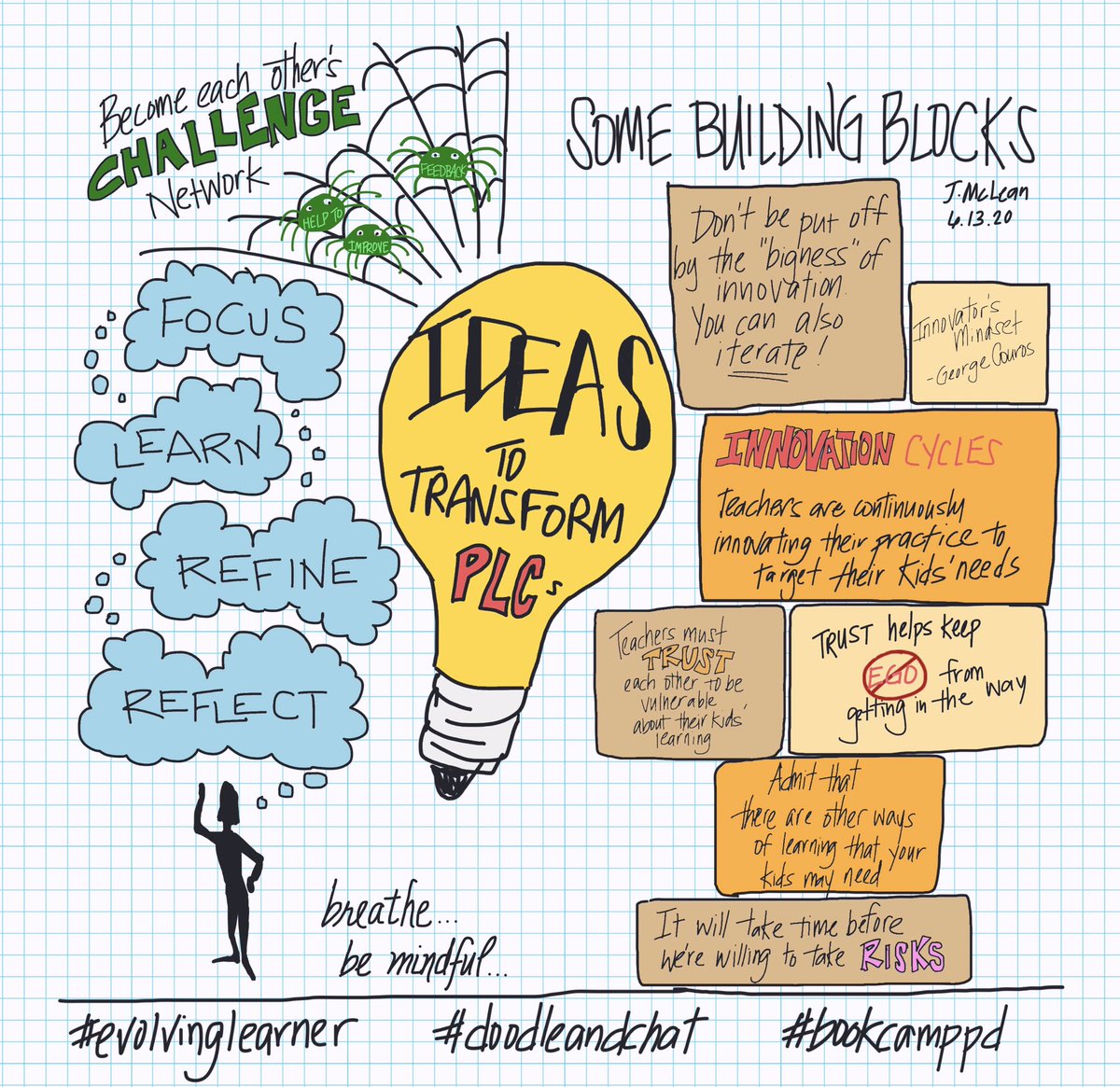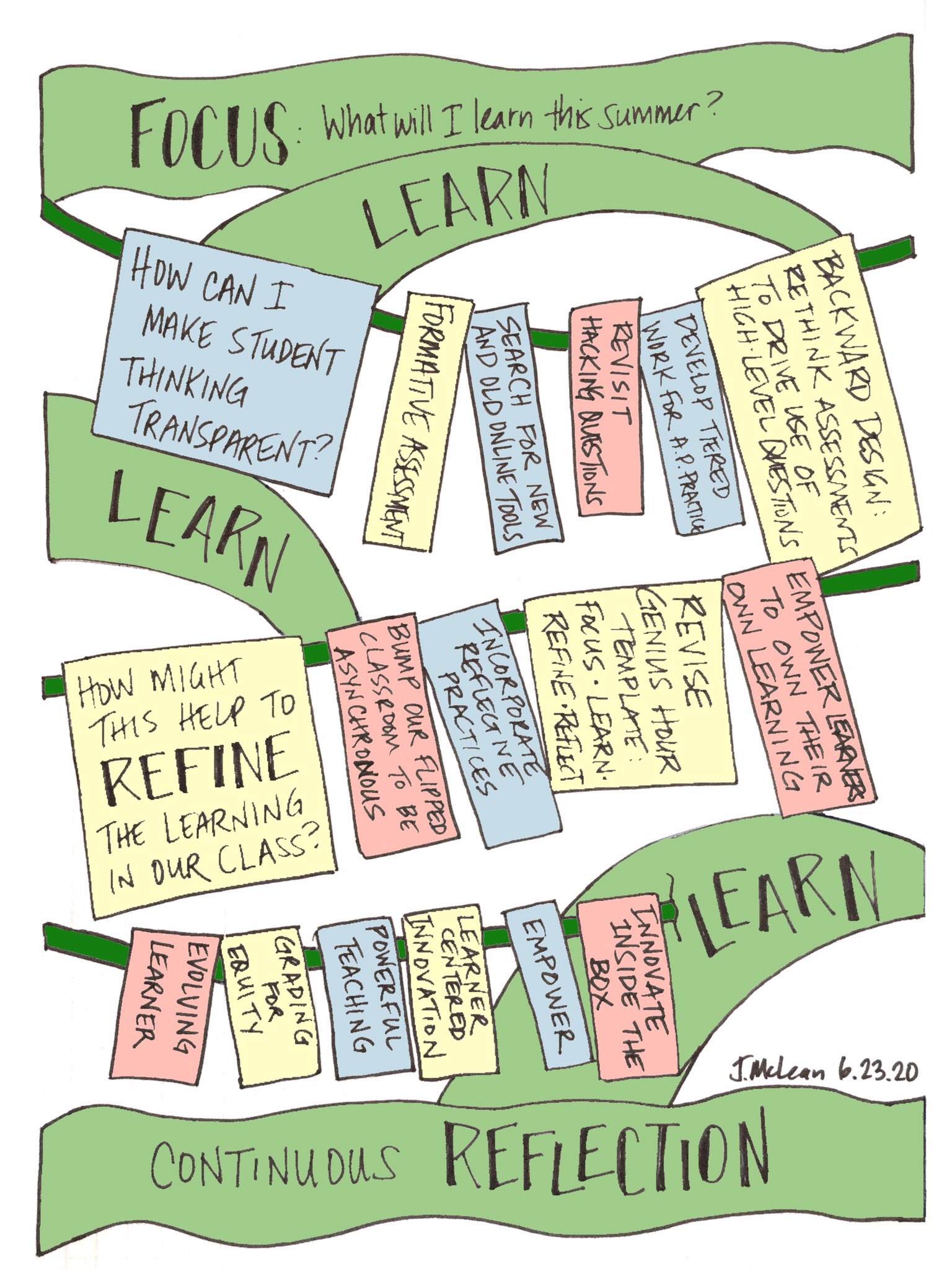Over the first month of the summer, I've spent time learning and playing with the following:
- I read the book Evolving Learner by Lainie Rowell, Kristy Andre, and Lauren Steinmann, which I discovered from one of my favorite Twitter chats, #bookcamppd run by someone I've learned so much from, Meredith Johnson. I was pulled in by the idea of changing the focus of Professional Development into Professional Learning, which I feel my district is trying to do. The book lays out a lot of the obstacles we've run into, as teachers are asked to drive their own learning rather than being pulled along with "sit and get" style PD days. It's a resource I plan to refer back to when we return to school, and it's helping me think through what it means to learn as an adult, via an inquiry cycle.
- In the process of thinking through these ideas, I worked in my new-found interest in doodling and created a few images that helped to form connections between my thoughts. I can't remember how I first came across #doodleandchat but Carrie Baughcum, her daughter Annabeth, and the whole doodling crew have brought me so much joy every Saturday morning.




- I'm not really a fan of note-taking in the traditional sense — I don't think we can write and take in ideas at the same time. And there's no way we can look for connections between the ideas while doing that. But I do think my students would benefit from a way to process our class discussions or the videos that I post, in a deeper way than basic notes.
- I came across the book Powerful Teaching by Pooja Agarwal and Patrice Bain, and specifically a strategy for including pauses within lectures and prompting students to basically do a brain dump and then cross-reference their thoughts with their peers' thoughts. I don't really lecture without it being a class discussion, but I think there's something here that we could build from in our classroom.
- But the reality is that there's a good chance we'll be learning-at-a-distance again in the fall, which makes this even more important. I will want to help students engage more deeply in the videos and other resources that I provide.
So my plan is to look into how sketchnoting can be taught to students and maybe expand to a variety of types of note-taking in general. Two resources I found: a podcast from Cult of Pedagogy called Note-taking: A Research Roundup that discusses different methods of note-taking, including sketchnoting, and the book Creatively Productive by Lisa Johnson that seems to include a variety of strategies to help students learn more effectively.
And for fun, I'll also work on my own doodling skills. I do believe that doodling and sketching is a skill that can be learned and improved on. I can use this as a way to show students that learning is a lifelong habit. Someone on this morning's #hacklearning pointed me toward the website Quick, Draw. You are given six things to quickly sketch and their AI program tries to guess what each is. I'm using it to provide random things to doodle, and then really thinking about what makes the object easily recognized. Like my first attempt at a cow was sad, but I thought about what was missing and (I think) my second attempt was an improvement. Might help my students with their doodling later on.
